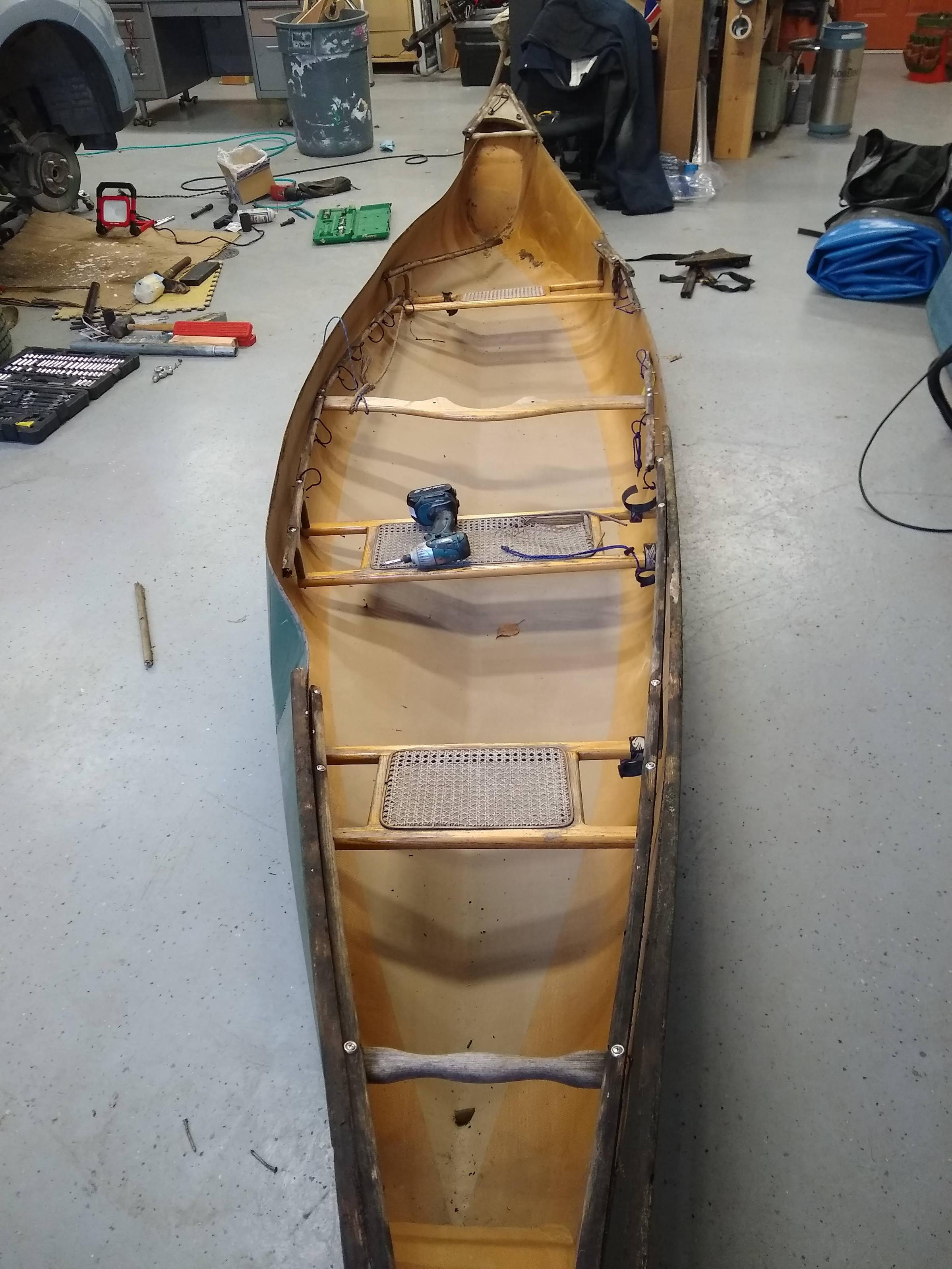|
11/10/2020 09:02PM |
|
09/28/2020 12:32AM |
tkurkcanoe
|
09/28/2020 07:23AM |
Paste wax can be applied on the outside close to the edge of the tear. Epoxy won't stick to wax. If the tear won't match up properly you have to use a knife or hacksaw blade.
Dan
|
09/28/2020 09:04AM |
My first canoe was a wrapped fiberglass Sawyer Cruiser that had been straightened out. It had major damage at the turn of the bilge on both sides. I could put my fist in the holes and move my arm around. I repaired it on the inside and the outside and painted the boat. It was back in service for years.
I would repair the gunwales first to recover the shape of the hull. Grind or cut out the overlapping fibers of kevlar to smooth out the hull. Use some clamps and scrap wood on the outside to make the hull smooth. Repair it on the inside first with fiberglass cloth and marine epoxy. Maybe 3 inch tape, followed by a 6 inch piece, maybe a larger piece over that. Make sure you overlap the tear by at least 5-6 inches. Three layers should do it. Then use some epoxy resin mixed with thickener like microballoons or the equivalent. Fair the rip on the outside and sand it smooth. You can smooth out the gel coat if you want. I always just paint repaired canoes.
|
09/27/2020 03:28AM |
Looking for advice here. I picked up a free MR Explorer in Kevlar with gel coat. It was free because it lost a battle to a plow truck. I hope to bring it back to life, as we've always wanted a lightweight tandem for our lake trips. I understand how to do kevlar and/or fiberglass patch jobs and gel coat fixes, but I'm wondering if I need to do something more for this severe damage.
The pic shows the worst of 2 tears in the hull at opposite ends of the canoe. If only patches, I'm thinking multiple kevlar layers along with fiberglass to finish it off. Do you think this would be strong enough?
Do you think some type of stitching is warranted, perhaps using braided fishing line? Tiny holes and then sew it up and then patch job on top?

I grew up taking BWCA trips, and I miss it a lot, although we have some of the nicest river trips up here in Alaska.
Thanks for any advice you might have!
|
09/30/2020 02:26PM |



|
10/03/2020 03:06PM |
I am just now figuring how to scarf some new inwales in a cedar and canvas OT Guide from 1953.
|
09/30/2020 02:21PM |
I'll try to avoid making more holes! Ha.
|
09/27/2020 10:28AM |